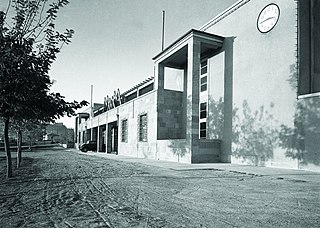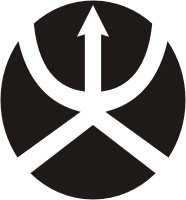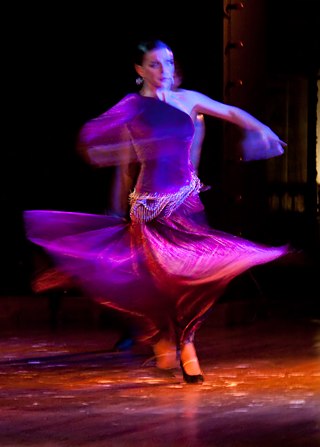
Ballet is a type of performance dance that originated during the Italian Renaissance in the fifteenth century and later developed into a concert dance form in France and Russia. It has since become a widespread and highly technical form of dance with its own vocabulary. Ballet has been influential globally and has defined the foundational techniques which are used in many other dance genres and cultures. Various schools around the world have incorporated their own cultures. As a result, ballet has evolved in distinct ways.
Dance moves or dance steps are usually isolated, defined, and organized so that beginning dancers can learn and use them independently of each other. However, more complex movements are influenced by musicality and lyrical relevance to express emotions or refer to a message. Dance moves tend to emphasize the concepts of lead and follow and connection.
This is a list of dance terms that are not names of dances or types of dances. See List of dances and List of dance style categories for those.
Because ballet became formalized in France, a significant part of ballet terminology is in the French language.

Labanotation is a system for analyzing and recording human movement, invented by Austro-Hungarian choreographer and dancer Rudolf von Laban, who developed his notation on movements in the 1920s.

Dance notation is the symbolic representation of human dance movement and form. Using methods such as graphic symbols and figures, path mapping, numerical systems, and letter and word notations. Several dance notation systems have been invented, many of which are designed to document specific types of dance while others have been developed with capturing the broader spectrum of human movement potential. A dance score is a recorded dance notation that describes a particular dance.

Pointe technique is part of classical ballet involving a technique that concerns pointe work, in which a ballet dancer supports all body weight on the tips of fully extended feet when wearing pointe shoes. A dancer is said to be en pointe when the body is supported in this manner, and a fully extended vertical foot is said to be en pointe when touching the floor, even when not bearing weight.

Vladimir Ivanovich Stepanov (1866–1896), was a dancer at the Mariinsky Theater in Saint Petersburg. His book, The Alphabet of Movements of the Human Body was published in Paris in 1892. The book describes a notation that encodes dance movements using musical notes instead of pictographs or abstract symbols. Stepanov breaks complex movements down to elementary moves made by individual body parts, enciphering these basic moves as notes. This method of dance notation, improved by Alexander Gorsky, notated many ballets from choreographer Marius Petipa. Today, this method is preserved in the Harvard University Library Theatre Collection and is known as the Sergeyev Collection.
Rudolf Benesh was a British mathematician who created the Benesh Movement Notation for dancing.
Dance position is a position of a dancer or a mutual position of a dance couple assumed during a dance. Describing and mastering proper dance positions is an important part of dance technique.

Motion, the process of movement, is described using specific anatomical terms. Motion includes movement of organs, joints, limbs, and specific sections of the body. The terminology used describes this motion according to its direction relative to the anatomical position of the body parts involved. Anatomists and others use a unified set of terms to describe most of the movements, although other, more specialized terms are necessary for describing unique movements such as those of the hands, feet, and eyes.

The Hacettepe University Ankara State Conservatory, the first conservatory to be founded in the Republic of Turkey, was established in 1936 by a directive of Mustafa Kemal Atatürk.
Eduard Greyling is a South African ballet dancer, now retired. After an illustrious career as a principal dancer with CAPAB Ballet in Cape Town, he became well known as a dance notator, teacher, journalist, and critic.

Eshkol-Wachman movement notation is a notation system for recording movement on paper or computer screen. The system was created in Israel by dance theorist Noa Eshkol and Avraham Wachman, a professor of architecture at the Technion. The system is used in many fields, including dance, physical therapy, animal behavior and early diagnosis of autism.

In dance and gymnastics, a turn is a rotation of the body about the vertical axis. It is usually a complete rotation of the body, although quarter (90°) and half (180°) turns are possible for some types of turns. Multiple, consecutive turns are typically named according to the number of 360° rotations.

Rudolf Laban created a movement theory and practice that reflected what he recognized as Space Harmony. The practice/theory is based on universal patterns of nature and of man as part of a universal design/order and was named by Laban: Space Harmony or Choreutics.

Graham technique is a modern dance movement style and pedagogy created by American dancer and choreographer Martha Graham (1894–1991). Graham technique has been called the "cornerstone" of American modern dance, and has been taught worldwide. It is widely regarded as the first codified modern dance technique, and strongly influenced the later techniques of Merce Cunningham, Lester Horton, and Paul Taylor.

Joan Benesh was a British ballet dancer who, with her husband Rudolf, created the Benesh Movement Notation, which is the leading British system of dance notation.
Flamenco zapateado notation or Flamenco zapateado (foot-stomping) notation is a type of dance notation. It is the graphic representation of the sonorous and motor aspects of the particular movements of flamenco dancing that are produced by the action of zapateado or foot-stomping.
Zella Wolofsky is a Canadian modern dancer, researcher, columnist, and educator. She danced with Dancemakers; Winnipeg's Contemporary Dancers; Burnaby Dance; Laura Dean; and independent choreographers such as Jean Pierre Perrault, Muna Tseng, Elizabeth Chitty as part of 15 Dance Labs, founded by Miriam Adams and Lawrence Adams in Toronto, Canada.












